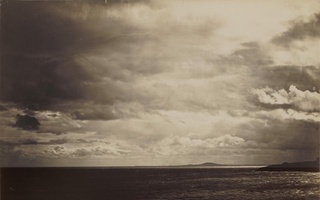Last year's swarm of millennial retrospectives put a peculiar emphasis on Gutenberg's invention of moveable type, as if it prefigured all subsequent media revolutions: television, the Internet, etc. What the Discovery Channel failed to drool over was the near-simultaneous development of printmaking. In the fifteenth century, woodcuts and engravings were accessible to an audience much larger than the small literate classes, and even today we cannot claim to be anything other than a visual culture. Early prints should be as important to us as early editions of the Bible.
Albrecht DŸrer (1471-1528) was the master of Renaissance printmaking, and his use of this first reproducible media can seem precociously cunning for a pre-modern artist. Throughout his career, he produced five complete series of 'Passions,' describing the stages of Christ's suffering and crucifixion. They were marketed to the masses, as devotional material to be studied in quiet meditation. Bound together into books, they were sold by Drer's wife at local fairs and by clergy at places of pilgrimage. According to the first and most unreliable of art historians, Giorgio Vasari, Drer's mid-life journey to Italy had as much to do with protecting his copyright as with studying classical volumes and perspective.
But Drer's motives went beyond money. Indeed, the popularity of his 'Passions' is indicative of a contemporary obsession as strong in DŸrer himself as in his audiences. His pictures were intended to allow the viewer to imagine him or herself in Christ's crown of thorns - the pious people of the time were urged to meditate on the suffering that Christ endured. Durer took this attitude to an extreme, painting self-portraits of himself as Jesus (not on display at the Busch), and writing that the portrayal of Jesus is one of the central purposes of any artist.
Widespread interest in Christ's sufferings and Drer's own identification with Christ as an agent of divine creation led DŸrer to return to the Passion again and again. His first major series, a sequence of large woodcuts referred to as the Large Passion was begun early in Drer's career, around 1497. These pictures are stuffed with detail, and the later sequences are, in comparison, a relief. The two most captivating series, Small Passion and Engraved Passion, represent a more restrained DŸrer. In the Small Passion, he creates what Fogg Museum print curator Marjorie Cohn describes as a comic book-like effect: 36 prints, each one possessing a strong left-to-right dynamic, pull the viewer through the Christian narrative, from original sin to the last judgment. This series of doctrinal woodcuts, which were, unlike engravings, cheap and available to great swaths of society, takes advantage of mass media as efficiently as anything that has come after.
Of course, each print is interesting in itself. DŸrer is in the details - floating loincloths, skulls, cross-hatching. But DŸrer was more than an engraver. Curator Jordan Kantor borrowed rare works from European museums, bare but masterful drawing and sketches.
Sitting under glass in the center of the exhibition room is an ancient book of prints with dirty corners, suggesting repeated page turnings on the part of ancient readers and encouraging us to spend time with these late-medieval comic books.
Drer's Passions, curated by Jordan Kantor and Marjorie Cohn, will be on display at the Busch-Reisinger Museum through Dec. 3.
Read more in Arts
Sarah Cracknell; Kelly's Locker (Instinct)Recommended Articles
-
Basic Black Art en Vogue at the FoggThe Fogg Museum's latest exhibit, "Prints of Darkness," glorifies the role of black in art. Weyerhaeuser Curator of Prints Marjorie
-
ENGRAVINGS ON EXHIBITIONEarly German prints are on exhibition in the Print Room of the Fogg Museum. Among the engravings shown are examples
-
Early Italian Prints on ViewA significant loan exhibition of early Italian engravings will open at the Fogg Museum on Monday. This exhibition has been
-
Italian Engravings at Fogg MuseumA special loan exhibition of early Italian engravings in memory of the late Francis Bullard, of the class of 1886,
-
German Engravings to be ExhibitedA number of German engravings are now on exhibition in the Print Room of the Fogg Art Museum. Among these
-
 MFA Sheds “Sunlight” On Early Photos
MFA Sheds “Sunlight” On Early Photos













